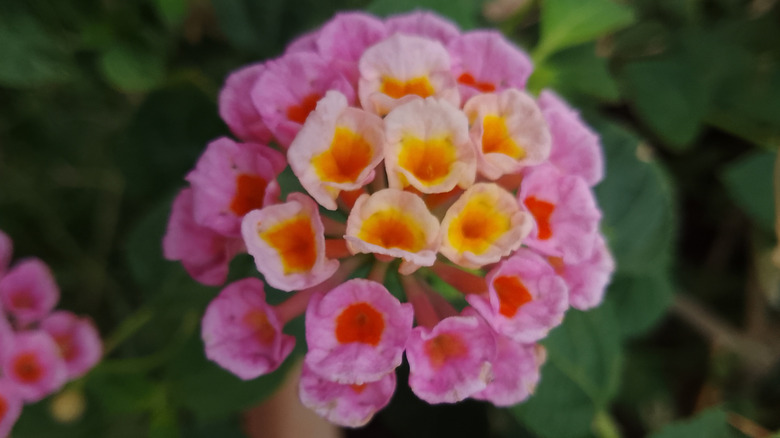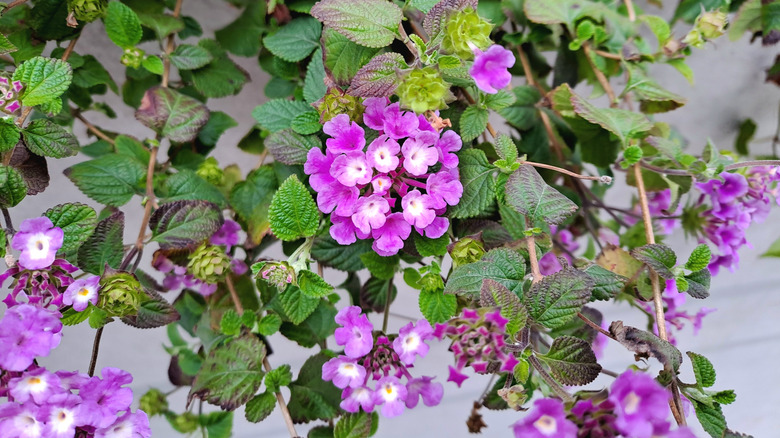How To Care For Heat-Tolerant Trailing Lantana In A Hanging Basket
So, you've picked up some trailing lantana (Lantana montevidensis) at the nursery with the intention of adding it to your hanging baskets. Great choice! These South American plants love the heat, and that's exactly what you want when looking for flowers perfect for hanging baskets in full sun. In fact, trailing — also called weeping — lantana will produce the most flowers when it gets all-day sun, so it should thrive.
Of course, for plants in any pot, success starts with the soil. Lantana is not picky, but it does love well-drained soil. If you expect a lot of rain or otherwise need to improve drainage, add some perlite or vermiculite to regular, high-quality potting soil. Throw in a slow-release fertilizer to get your plants off to a good start. Also, be careful not to overcrowd the pot, as trailing lantana needs good air circulation to stay healthy.
When we hear a plant is drought tolerant, it's easy to assume it almost never needs watering. However, you should still check the soil, and when the top 2 inches are dry, it's time to water. Take a bit of extra care not to splash the leaves, as this plant can be susceptible to powdery mildew. About once a month, add fertilizer to your watering routine, but be careful not to go overboard, as too much fertilizer may ultimately hurt the plant.
What to know about planting trailing lantana
The right amount of watering and fertilizing will give your plants the foundation they need, but there are a few more things you can do to successfully care for lantana plants and keep them blooming profusely. This is important, as a huge part of the charm of trailing lantana is the clusters of tiny flowers that come in a wide array of colors and attract pollinators to your baskets. Deadheading is key to keeping trailing lantana blooming throughout the summer season. Snip them as soon as the blooms are spent. Additionally, if you find your plants are getting leggy, you can cut them back by about a third.
We also suggest growing this plant near your outdoor hangout areas, as lantana flowers repel mosquitos. Keep in mind that growing trailing lantana in hanging baskets is a great way to use a potentially invasive plant in your yard — when planted in gardens, trailing lantana has become invasive in some parts of California and the Gulf Coast. But if you get cold winters, you don't need to worry about invasiveness; they are only hardy in USDA zones 8 through 10. If you live in a warmer climate, keeping these plants contained to pots is the best option. They are also toxic and can cause skin irritation, so having them high up and out of reach of pets and children is a good idea.

